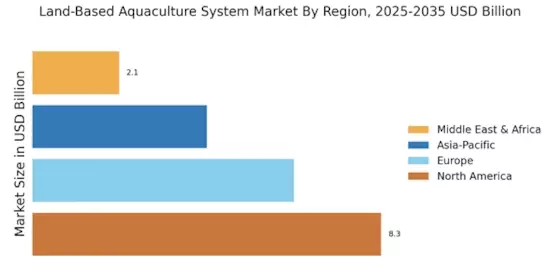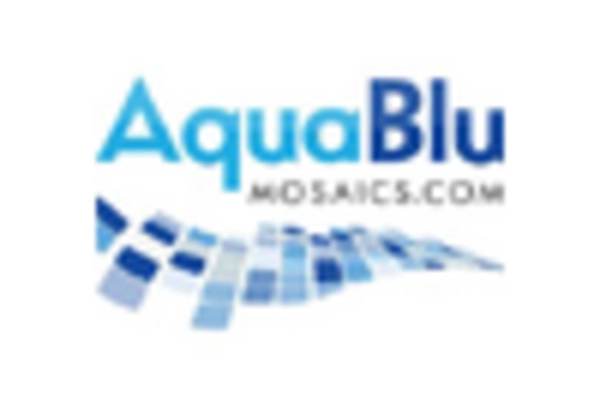Regulatory Support
Regulatory frameworks are increasingly supporting the growth of the Land-Based Aquaculture System Market. Governments are recognizing the importance of sustainable aquaculture practices and are implementing policies that encourage investment in land-based systems. These regulations often include financial incentives, grants, and subsidies aimed at promoting environmentally friendly practices. For example, certain regions have introduced tax breaks for companies that adopt sustainable aquaculture technologies. This regulatory support not only fosters innovation but also enhances the attractiveness of land-based systems as a viable alternative to traditional aquaculture. As these policies evolve, they are likely to create a more favorable environment for investment in the Land-Based Aquaculture System Market, thereby driving growth and development.
Rising Seafood Demand
The Land-Based Aquaculture System Market is significantly influenced by the rising demand for seafood, driven by population growth and changing dietary preferences. As the global population is expected to reach nearly 9 billion by 2050, the demand for protein sources, particularly seafood, is projected to increase substantially. Reports indicate that seafood consumption has risen by over 20% in the last decade, prompting the need for sustainable production methods. Land-based aquaculture systems offer a viable solution to meet this growing demand while addressing overfishing concerns. By providing a consistent and reliable source of seafood, these systems are likely to play a crucial role in satisfying consumer needs. This trend underscores the importance of the Land-Based Aquaculture System Market in ensuring food security and sustainability.
Technological Innovations
Technological advancements are playing a pivotal role in shaping the Land-Based Aquaculture System Market. Innovations such as automated feeding systems, water quality monitoring technologies, and advanced breeding techniques are enhancing operational efficiency and productivity. For instance, the integration of IoT devices allows for real-time monitoring of water parameters, which is crucial for maintaining optimal conditions for aquatic species. Furthermore, the market is projected to grow at a compound annual growth rate of approximately 10% over the next five years, driven by these technological innovations. As companies invest in research and development, the potential for improved yield and reduced operational costs becomes increasingly apparent. This trend suggests that technological advancements will continue to be a key driver in the Land-Based Aquaculture System Market.
Sustainability Initiatives
The Land-Based Aquaculture System Market is increasingly driven by sustainability initiatives aimed at reducing environmental impact. As consumers become more environmentally conscious, aquaculture systems that minimize water usage and eliminate the need for wild fish as feed are gaining traction. The industry is witnessing a shift towards closed-loop systems that recycle water and nutrients, thereby enhancing resource efficiency. According to recent data, sustainable aquaculture practices could potentially reduce greenhouse gas emissions by up to 30% compared to traditional methods. This growing emphasis on sustainability not only appeals to eco-conscious consumers but also aligns with regulatory frameworks that promote environmentally friendly practices. Consequently, companies that adopt sustainable practices are likely to gain a competitive edge in the Land-Based Aquaculture System Market.
Consumer Preferences for Quality
Consumer preferences are shifting towards high-quality, fresh seafood, which is significantly impacting the Land-Based Aquaculture System Market. As consumers become more discerning about the origin and quality of their food, there is a growing demand for products that are free from contaminants and sustainably sourced. Land-based aquaculture systems are well-positioned to meet these preferences, as they can provide traceability and transparency in production processes. Additionally, the ability to control environmental conditions allows for the production of seafood that is not only fresher but also healthier. Industry expert's indicates that consumers are willing to pay a premium for high-quality seafood, which presents a lucrative opportunity for producers in the Land-Based Aquaculture System Market. This trend highlights the importance of aligning production practices with consumer expectations.


















Leave a Comment